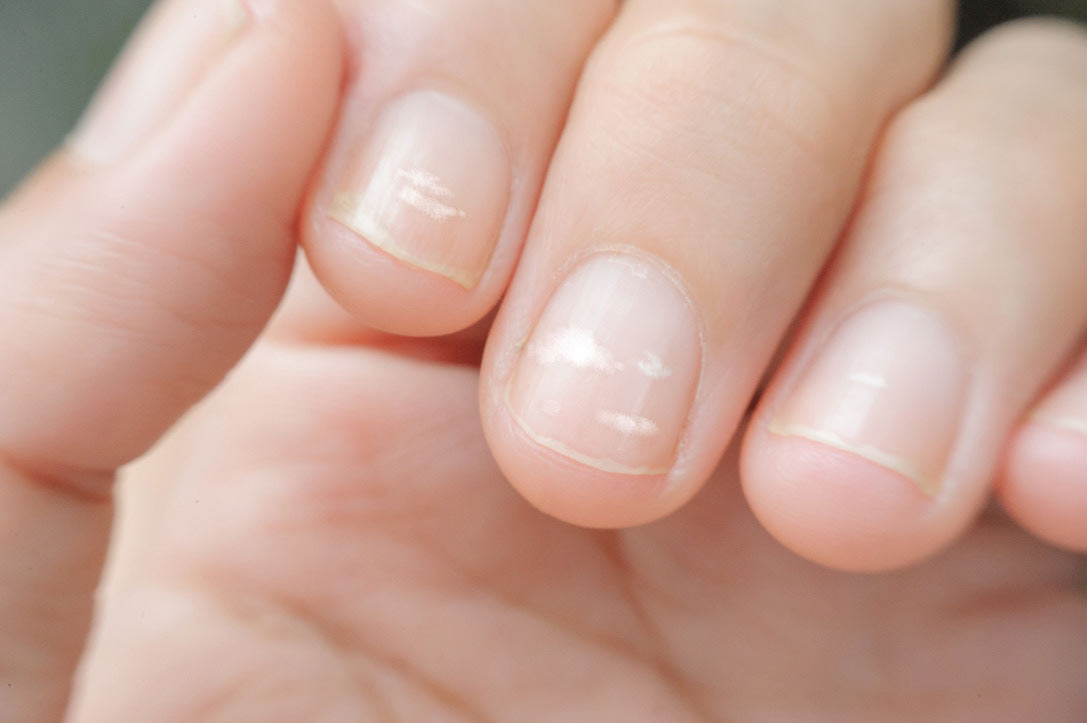You’ve probably noticed a few white spots on your nails lately, and you’re wondering, “What’s causing them?” Well, in most cases they’re harmless. These white spots are caused by nail fungus, trauma to the nail bed, or nail polish changes. However, there are some things you can do to prevent them, including using a gentle manicure.
Leukonychia
The medical term for white spots on your nails is leukonychia, which derives from the Greek words leuko, meaning white, and onyx, meaning nail. It’s caused by a number of factors, including injury to the nail matrix. Fortunately, the majority of people will outgrow the symptoms without medical intervention.
While white spots on your nails are often harmless, if they persist and continue to appear, they’re usually a sign of a more serious issue. Seeing a physician is the first step, and the good news is that most of the common causes of white spots on your nails are easily treatable once you’ve been diagnosed. Your doctor will examine your fingernails and feet to find out what’s causing them. He may even prescribe a medication to help you get rid of the problem.
Nail fungus
If you are experiencing white spots on your nails, you may be dealing with nail fungus. Fortunately, this condition is highly treatable once diagnosed. Your doctor will likely recommend antifungal medications or may request some other tests in order to rule out any underlying health problems.
Medications for nail fungus include terbinafine (Lamisil), itraconazole (Sporanox) and fluconazole (Diflucan). You may need to use an oral antifungal for several months to see results. Be sure to talk to your healthcare provider about possible side effects and interactions of these medications. You may also benefit from using a topical antifungal to treat your nails.
Diabetes
White spots on your nails may be a symptom of diabetes, a disease characterized by thick skin on the hands, fingers, and toes. If the condition isn’t well-controlled, it can spread to other areas like your face or shoulders. In severe cases, this condition can lead to stiff fingers and joints, requiring physical therapy. The best way to treat diabetes is to regulate blood sugar levels.
In addition to white spots on your nails, the nail plates can also be affected by other health issues. People with diabetes are more susceptible to the fungus that causes this discoloration. In addition to diabetes, the condition can affect other parts of the body, such as the kidneys.
Kidney failure
White spots on your nails may an indicator of kidney disease. The medical name for them is leukonychia. Other symptoms of kidney disease include half-and-half nails, loosening nails, and black lines on the nail surface. You should see a doctor if you notice any of these symptoms.
The condition isn’t necessarily caused by kidney disease, but it is an indicator of other underlying conditions. For example, people with psoriasis are at a higher risk of developing kidney disease because of their autoimmune condition. This condition causes the body’s immune system to attack its own cells, which can cause organ damage.
autoimmune disease
If you’re starting to notice white spots on your nails, they may be due to an autoimmune disease. This condition causes the body’s immune system to attack healthy cells and tissues in the body. However, treatment for this disease isn’t very simple. It requires extensive diagnostic tests and treatments. However, it is rarely fatal and can be controlled with medication.
Melanoma
Melanoma is a type of skin cancer that starts in the nail bed. Although it is rare to find this type of cancer in your nails, it can occur. About one percent of melanomas start in the nails of Caucasians, while as many as 20 percent develop in African-American nails. When the cancer is in its advanced stages, it can spread to the nail’s cuticle area and the skin around it.
Fortunately, melanoma that starts in the nails is curable if caught early. With timely diagnosis and treatment, the survival rate for subungual melanoma is remarkably high – ninety-five percent of patients survive the condition. However, many people do not have access to a dermatologist with special training in treating this type of cancer. Fortunately, there are many ways to find help and information regarding this type of cancer.

